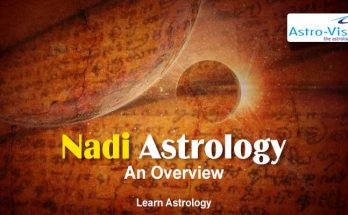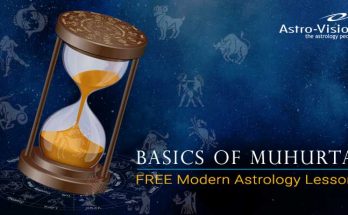Timing Marriage
This article explores the relationship between the natal chart and the appropriate annual chart with specific reference to Vivaha (marriage) and Punya (auspicious) Sahams on the question of timing marriage.The Varshapala or annual chart is based on the time of the Sun’s return to the same point as that occupied by him at the time of birth. The yearly predictions can be based on this chart. Muntha is the point of intersection between the birth chart and the Annual chart. It moves one sign a year. Hence, it is called Progressed Ascendant. Specific results based on its position can be forecast for the year in question.
The Varsheswara or lord of the year is selected out of the following five:
(i) Birth Ascendant, (ii) Annual chart Ascendant lord, (iii) Muntha lord, (iv) Dina Ratri Pati and (v) Tri Rasi Pati.
The Sahams are special mathematical points arrived at by a manipulation of longitudes of the planets in the Varshaphala.
The Sahams are analysed in the context of the following factors
(i) Natal chart
(ii) Appropriate Dasa System
(iii) Transit Influence of Saturn and Jupiter on the birth chart
(iv) Annual chart
(v) Sahams – Punya and Vivaha Sahams.
(a) Punya Saham (Fortune and Auspiciousness) : If Varsha Pravesha or the year starts during day,
Punya Saham = Moon-Sun+Ascendant. If it starts during night,
Punya Saham = Sun-Moon+Ascendant.
Punya Saham provides a protective shield to the native during the year. It promotes happiness, auspicious ceremonies and gain of wealth, if the Saham and its lords are strong as per Panchavargeeya Bala. If weak, it yields bad results.
(b) Marriage Saham (Vivaha Saham): Vivaha Saham = Venus-Saturn+Ascendant (for both day and
night Varsha Pravesha). This Saham throws light on the prospects of marriage in the annual chart for the year in question.
(c) Strength of the Saham: A Saham is strong, if the Saham lord is exalted and in own house in the annual chart. Besides, the Saham acquires further strength if it is with benefic planets in a benefic house with the year lord. If the Saham lord aspects its own Saham, conjoins with benefic planets and aspects the Ascendant or relevant house with high Panchavargeeya Bala (more than five units), the Saham is considered as auspicious. Otherwise, the Saham, is weak and does not yield good results.
Interpretation of Sahams
(i) Punya Saham: This Saham or its lord in general should be disposed in an auspicious way. It should establish a relationship (position, aspect, conjunction, Yoga) with the Ascendant or Ascendant lord or 7th house or 7th lord either from the Ascendant or Chandra Lagna (Moon-sign) of the annual chart either singly or severally.
(ii) Vivaha Saham: Either Vivaha Saham or its lord should establish a relationship (position, aspect, conjunction, Yoga) with the 7th house or 7th lord either from the Ascendant or Chandra Lagna (Moon-sign) of the yearly chart singly or severally.
Definitions
Mudda Dasa • The Vimshottari Dasa system extended to annual charts is known as Mudda Dasa. It is also Nakshatra-based but limited to one year.
Muntha • It is located in the Ascendant at the time of birth and progresses by one sign each year and is known as Progressed Ascendant. The Rasi lord where the Muntha is posited is called Muntha lord.
Dina-Ratri Pati • This is the lord of the Sun-sign where Varsha Pravesha (commencement of the year) occurs during day time (Dina pati) and the lord of Moon-sign in the case of Varsha pravesha occuring during night time (Ratri rpati).
Tri-Rasi Pati • The lord of the Tri-rasi pati varies from sin and depends upon Varsha Pravesha occurring during daytime or nighttime. A standard table of various lords for different signs is given in all Tajika texts or books on Varshaphal.
Panchadhikaris • They are the five officer-bearers of an annual chart, one out of which eventually qualifies as year lord. The five are Muntha lord, Lagna lord of Bith chart; (natal Ascendant) Lagna lord of annual chart (Varshaphal Ascendant), Tri-Rasi pati and Dina Ratri pati.
These principles have been found to work in more than 90% of the charts in a specific research study done by the scribe.
Chart 1: Male: Born July 30, 1959 at 10h. 29m. at 15 N 30, 80 E 06 with a balance of 8 years 10 months 27 days of Moon Dasa at birth.
This is the case of a marriage taking place in November 1985 which can be examined on the parameters outlined above.
Chart 2: Varshaphal: July 30, 1985 at 2h. 27m. at 15 N 30, 80 E 06.
| Panchadhikaris | Planets | Strength (Varga Bala) |
|---|---|---|
| 1. Munta Lord | Mars | 8.01 |
| 2. Birth Ascendant lord | Mercury | 11.91 |
| 3. Annual Ascendant lord | Venus | 14.12 |
| 4. Trirasi lord | Moon | 11.22 |
| 5. Dinaratri lord | Jupiter | 5.39 |
| Year Lord | Mercury |
|---|---|
| 1. Muntha in sign | Scorpio 14-40 |
| 2. Muntha in house | 7th |
| 3. Muntha lord | Mars |
| 4. Muntha lord in house | 3rd |
1. Natal Chart:
(a) Ascendant: Virgo rises with its lord Mercury (R) in the 11th in Cancer with 12th lord Sun. The Ascendant is in Hasta Nakshatra whose lord is the Moon. The Ascendant lord Mercury who is also the 10th lord is in his own Nakshatra (Aslesha) and is a Yogakaraka. The 7th house is Pises whose lord Jupiter in the 2nd (Kutumba) is in his own Nakshatra (Visakha). The Ascendant and 7th lords are well disposed.
(b) Chandra Lagna (Moon-sign): The Moon is in Taurus where he is exalted and in Rohini Nakshatra. The 7th house from here is Scorpio whose lord Mars aspects his own sign and is with Kalatrakaraka or natural significator of marriage Venus, a benefic disposition. Saturn is the Yogakaraka from Chandra Lagna.
(c) Surya Lagna (Sun-sign): The Sun is in Cancer whose lord Moon is a great friend of the Sun who is in Pushya Nakshatra. The 7th house here is Capricorn whose lord Saturn aspects his own house from a retrograde state.
(d) Navamsa Ascendant: Gemini rises in the Ascendant with its lord Mercury in the 9th house. The 7th house is Sagittarius aspected by Jupiter and Saturn(R). The natural Kalatrakaraka Venus is aspected by 7th lord Jupiter.
The following qualify for giving the marriage considering all the three Ascendants, namely, .
i) Jupiter and Mercury;
ii) Mars and Venus;
iii) Saturn and Rahu
2. Natal Dasa Sequence
Rahu Dasa is from June 1975 to June 1993. Mercury Bhukti is from June 1983 to December 1985. Saturn Antara is from August 1985 to December 1985)
(a) Dasa Lord: Rahu is in the Ascendant aspecting the 7th house Pisces. Rahu is a benefic being in his own sign (Virgo). His dispositor Mercury is in the 11th, the house of gains.
Varshaphal Aspects
The aspects in Varshaphal are different from those in Parasari system. Friendly aspects are the 5th, 9th, 3rd and 11th. Inimical aspects are the 1st, 4th and 10th.
(b) Bhukti Lord: Mercury is the Ascendant and 10th lord (Yogakaraka) in the 11th house of gains, favours, physical comforts and financial gains and can show martrimony.
(c) Antara Lord: Saturn has already qualified from the Sun-sign for clinching the marriage.
3.Transits
(a) Saturn transits Scorpio in 1985 in the 7th from natal Moon and aspects transit Jupiter, the 7th lord from the Ascendant.
(b) Jupiter: During 1985, Jupiter is in Capricorn, aspecting Chandra Lagna and the Ascendant.
4. Annual Chart
The natal indications will be expressed through the Varshaphal (Chart 2). The annual chart for 1985-1986 shows the Ascendant is Taurus whose lord Venus is in the 2nd aspected by Mercury, Saturn and the Moon. The 7th lord Mars aspects his own house. The Navamsa Ascendant is Virgo aspected by its own lord who is retrograde. The 7th lord from Navamsha Ascendant is Jupiter who aspects his own house.
The Mudda Dasa operating is of Jupiter and Venus both of whom are qualified for bringing about marriage. The year lord Mercury who is the 2nd and 5th lord also aspects 7th where Muntha is posited. He is auspicious and ensures free flow of the results promised in the natal chartas both the Ascendant lord and the year lord in the annual chart.
5.Role of Sahams
Punya Saham: = Sun (a) – Moon (b) + Ascendant (c)
a = Sun’s longitude = 3s 13° 00′
b = Moon’s longitude = 8s 17° 09′
c = Ascendant = Is 29° 31′
Since a is less than b add 12 signs to a and determine the Saham.
Punya Saham = a – b + c = 15s 13 00′ – 8s 17° 09′ + Is 29 31′
Punya Saham = 8s 25° 22′ or Sagittarius 25° 22′
Punaya Saham is in Sagittarius whose lord Jupiter is in the 9th. It is a very auspicious position in chart.
Vivaham Saham: = Venus (a) – Satun (b) + Ascendant (c)
a = Venus’ longitude = 2s 2° 21′
b = Saturn’s longitude = 6s 27° 49′
c = Ascendant = Is 29° 31′
Since b is greater than a add 12 signs to a Vivaha Saham = a – b + c = 14s 2° 21′-6s 27 49’+ Is 29 31′
Vivaha Saham = 9s 14 03′ or Capricorn 14° 03′
Vivaha Saaham is in the 9th along with Punya Saham lord. Its lord Saturn aspects this Saham, and forms a strong Ithasala Yoga with Mars, the 7th lord. The Vivaha Saham is disposed in an auspicious manner during the year.Since the indications for marriage are shown by all the planetary factors, it occurred in November 1985. •
Courtesy: MODERN ASTROLOGY(Author :M. Anjaneyulu)










One Comment on “Predictive Technique of Varshaphal”